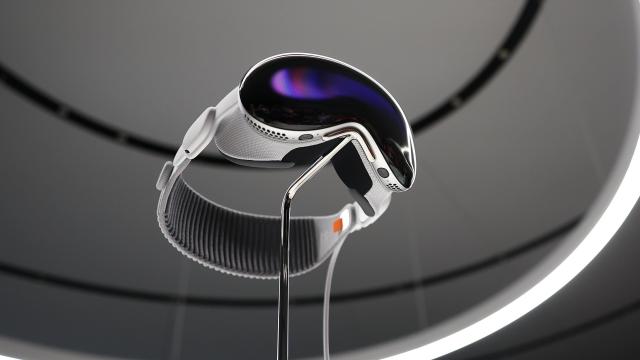The Apple Vision Pro is here and, if social media is to be believed, it’s already creating a new race of goggle-fueled cyborgs. You’ve likely seen videos of people staggering around New York City like digitally transported zombies, the Vision Pro affixed to their faces like Scuba gear on a delirious diver who’s mistakenly crawled up on dry land. So far, people seem to be really enjoying this thing but it’s worth asking whether the device is good for them or is, instead, threatening to send them down a digital rabbit hole they’ll never want to come out of.
Long before Apple debuted its trendy new “spatial computing” gadget, the internet was already a convenient way to dispense with reality. Real life just isn’t all that exciting most of the time and the internet, when leveraged correctly, offers endless diversions from whatever less-than-amazing circumstances you happen to be enduring on a given day. The Apple Vision Pro feels like the next evolution in the internet’s hostile takeover of human consciousness, the natural heir to the mobile phone in terms of aggressive attention-hijacking. Or maybe that’s just what Apple wants you to think.
Either way, the entire concept seems concerning. Real life is boring, sure, but it is, you know…real. Giving into endless digital fantasies that are projected onto your eyeballs by a dystopian helmet doesn’t seem exactly healthy. One Reddit user recently expressed his fears about the Vision Pro, writing:
I know once I try it/get invested in the experience, the ‘vanilla’ world will lose some of its luster. Being able to overlay workspaces, data, interactive panels, etc. will 100% make me never want to take the damn thing off lol. I think this is the first time I’ve ever felt this way about a piece of tech or product – something that has the potential to fundamentally change how I interact with the world around me is a bit of a scary thought.
It’s easy to relate to this kind of anxiety. You can only imagine what the allure of the Vision Pro might be like if Apple managed to work out the kinks and improve the headset’s form factor. So far, people have complained about its price (it’s a howl-inducing $US3500) and the weight (it’s almost 23 ounces, which is a lot to carry around when it’s strapped to your skull); yet history has shown that, with additional product versions, prices tend to drop and hardware sizes diminish. At the same time, the potential for future software integrations in the Vision Pro seems potentially limitless. Entertainment and gaming possibilities, in particular, seem to point to a future where you can zone out pretty much anywhere while watching or playing anything.
With its “metaverse” push, Silicon Valley is doing everything it can to push people away from the real world and deeper into an integrated digital reality where they’ll be easier to monitor, analyze, and, most importantly, sell stuff to. The question is: Will enough people take the bait to make this fake digital realm a viable business model for the likes of Apple and Meta?
The jury’s still out on that one, but I’m hoping the answer is no. There are some promising signs that most normal people are not particularly interested in helping our tech overlords build a literal Matrix. For one thing, a number of the people who have shelled out the stunning $US3,500 for the device don’t seem to know what to actually do with it. Like other “metaverse” products, the Vision Pro threatens to become a curiosity-inspiring oddity but little else. One report on new Vision Pro users, from New York Magazine, notes that:
Most interesting are owners’ debates over what, exactly, they just purchased. Is the Vision Pro for watching movies? Working? Being alone? Collaborating? Nobody knows, really. Rather than settling into a new routine, or building a workflow around their new computers, users spend a lot of time talking in the future tense, about what this thing might do once there are more apps, or once it’s smaller and lighter and better, or once it’s normalized among the broader population.
So, yes, while hype about the Vision Pro is currently high, there isn’t a ton of evidence that people actually want to walk around with a computer strapped to their heads 24/7. Apple is enjoying a sweet spot, whereby the device is being met with equal parts curiosity and excitement but isn’t inspiring the kind of rampant ridicule that Meta typically did when it released “metaverse” products.
That said, Apple execs should definitely be worried that ridicule is incoming. Indeed, the Vision Pro is just one clever pejorative away from having its highly expensive hardware transformed into a global joke (anyone who remembers the term “Glassholes” will know what I mean). On that note, what should we call people who wear Vision Pros in public? Sound off in the comments if you have any thoughts.
